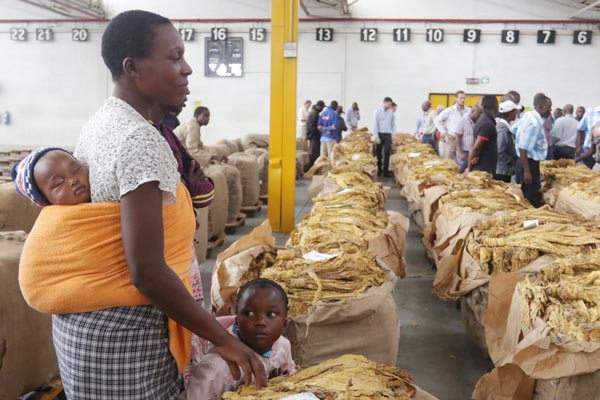
BY MTHANDAZO NYONI
DEFORESTATION in the country’s tobacco-producing areas continues at alarming levels, with little being done at farmer level to address the problem, the Zimbabwe Tobacco Association (ZTA) has said.
In its latest report, ZTA said deforestation, which can cause soil erosion if done on a large scale, was still rampant in tobacco-producing areas with government failing to control the malpractice.
“Deforestation levels in tobacco-producing areas continue at alarming levels, with little being done at farmer level to address the problem,” part of the report reads.
“The afforestation levy, introduced in 2015, still remains idle as bureaucratic processes hinder its access, while tens of thousands of wooded indigenous hectares each year were destroyed for the curing of tobacco.”
The Forestry Commission of Zimbabwe estimates that the country loses about 300 000 hectares of woodlands annually and that 15% of this deforestation rate was as a result of tobacco curing. Zimbabwe has, since its controversial land reform programme which saw thousands of subsistence farmers being resettled on prime agrarian land formerly owned by white commercial farmers, witnessed an exponential growth in the number of small-scale tobacco growers.
The growth has, however, translated to high levels of deforestation, a situation that can reduce some areas into wastelands causing extinction of fauna and flora, changes to climatic conditions, desertification and displacement of populations as observed in current conditions in certain areas and in the past through the fossil record.
According to experts, a single hectare of smallholder farming produces about 1 400kg of tobacco that requires seven tonnes of firewood to cure.
- Chamisa under fire over US$120K donation
- Mavhunga puts DeMbare into Chibuku quarterfinals
- Pension funds bet on Cabora Bassa oilfields
- Councils defy govt fire tender directive
Keep Reading
With 184 192 farmers taking up the crop this season, the effects on the land could be much more catastrophic.
ZTA said high levels of undestroyed tobacco stalks, including re-growth, could be found in all areas.
“Punitive measures and enforcement of laws are not being actioned, and if done, very selectively. In some areas, farmers simply do not have the financial resources to destroy their stalks, while others have no intentions of planting another crop,” it said.
Tobacco Industry Marketing Board (TIMB) spokesperson Isheunesu Moyo said efforts were being made to reduce deforestation by educating farmers on the need to use sustainably produced gumtrees, not indigenous tress.
“We have also been promoting the use of coal. “We have also been educating farmers on the need not to destroy indigenous trees and use sustainably produced gumtrees,” he said.
Farmers, however, had indicated that coal was not a sustainable alternate as it was expensive and inefficient
But Moyo thought otherwise.
“We have got over 300 years of coal in Zimbabwe currently, but the issue is the international buyers are saying they wouldn’t want coal to be used because it cannot be generated easily,” he said.
“It takes a long time, but for Zimbabwe we have got so much coal. In Europe and elsewhere they have got issues with coal, but we don’t have those challenges.”
For the contractors, Moyo said they were also accessing the fund that was set aside by the Sustainable Afforestation Association where they are also planting trees.
Meanwhile, ZTA said latest statistics available to June 7 2019 reflect a 58% drop in seed sales at 145 550 grams compared to 346 195 grams at a similar time last year.
“Though seed sales picked up in the month of May, the statistic remains an indication of the lack of confidence by farmers to start preparations for next season,” it said.
“With the drier weather during 2018 and early 2019, levels and availability of water sources for seedbeds and irrigated tobacco remain at concerning low levels in many farming areas.
“Zesa load-shedding although coming in at the last stages of curing the crop, will have an impact on lands irrigating and planting operations come August onwards.”
Last year, tobacco farmers delivered 252 million kg, an all-time record, raking in $892 million. As at June 12 2019, ZTA said 171,2 million kg at an average price of $1,87/kg had been sold after 57 days of trade, a decrease of 11,1 % in volume and a significant 36% decrease in the seasonal average price.
Tobacco export earnings have been growing over the years from $772,6 million in 2014, rising to $855 million in 2015.
In 2017, tobacco accounted for a quarter of Zimbabwe’s $3,8 billion export earnings. It is also one of the largest employers in the country, where formal employment is scarce, but workers in the sector are classified as working poor.
TIMB is projecting tobacco output of over 260 million kg from 252 million kg obtained last year.
But with current viability challenges facing farmers, it could be difficult to achieve this feat.











